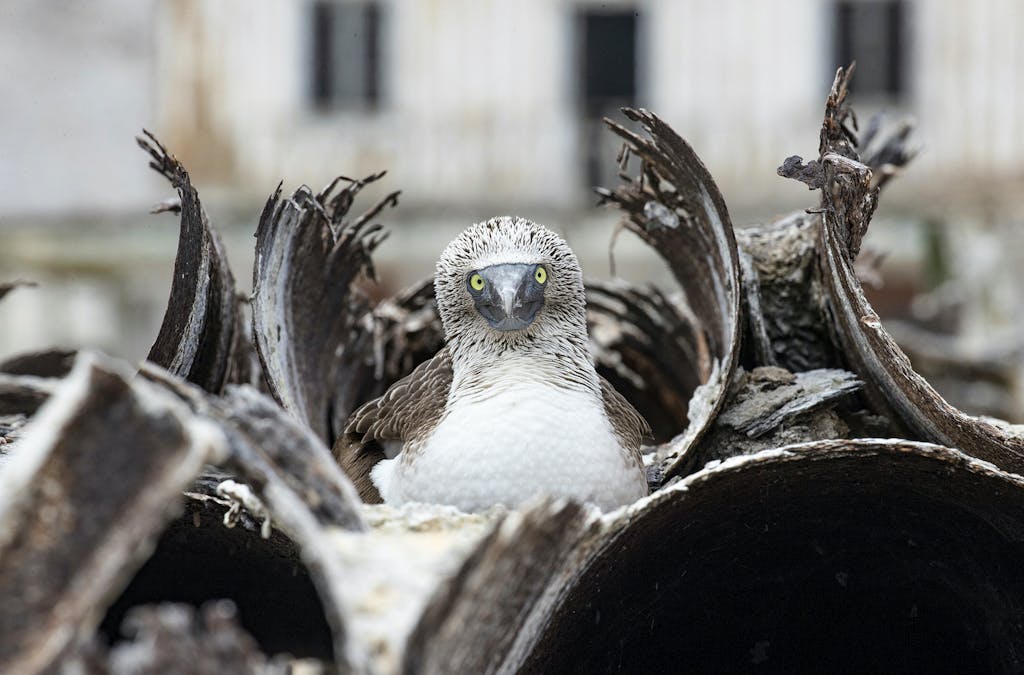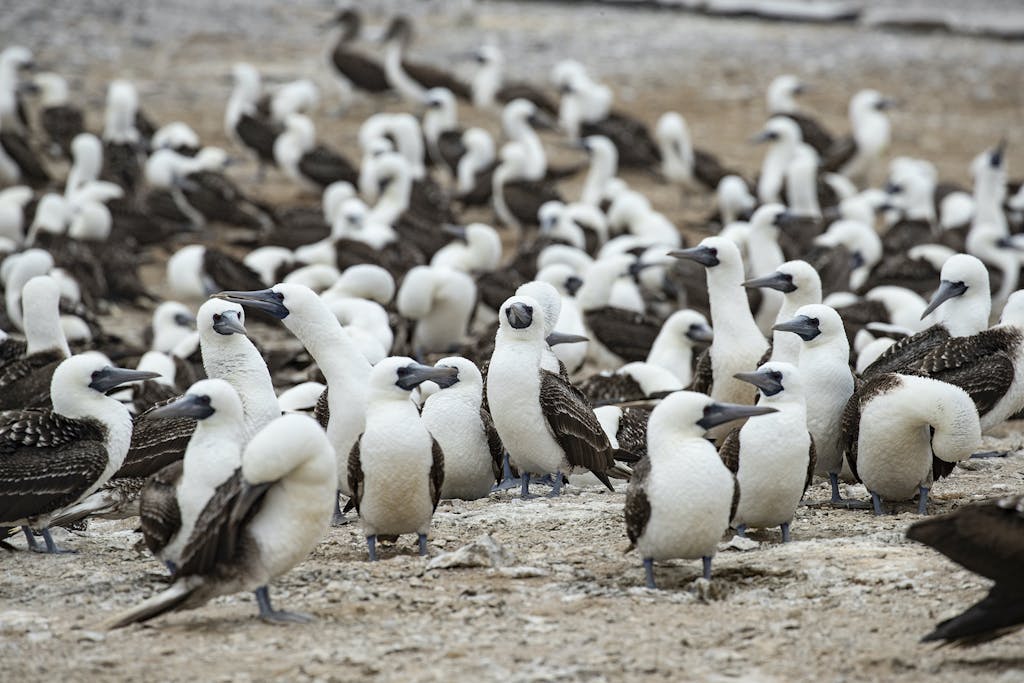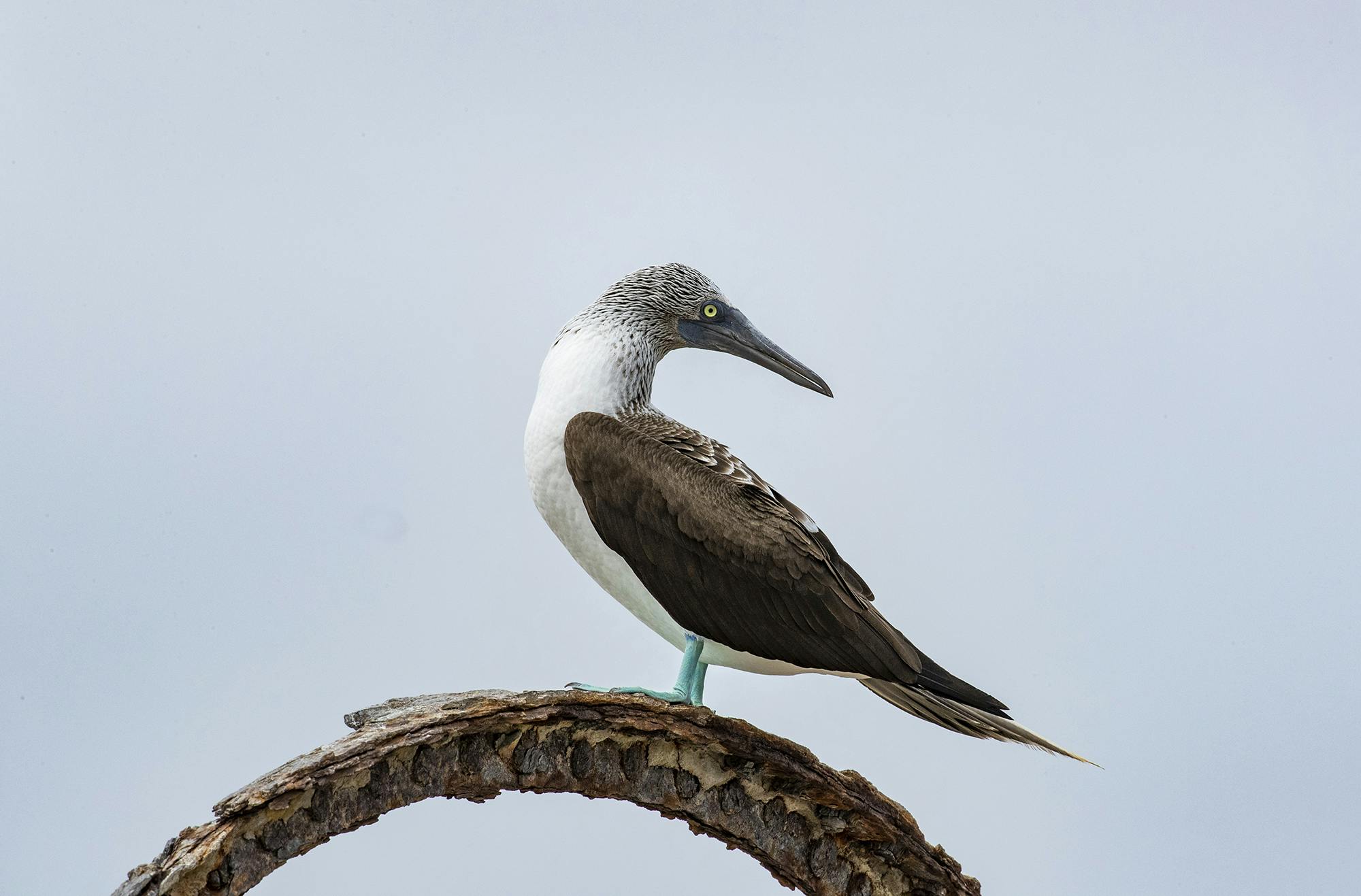Behind the Lens: A Blue-footed Booby Encounter at Lobos de Tierra, Peru
The island of Lobos de Tierra sits off the northern coast of Peru, its lunar-like landscape and rocky shorelines creating a habitat that sees seabird colonies thrive.
Wildlife filmmaker Ross Vernon McDonald and Silversea guests observed skies awash with flocks of bird species while traveling to the island in a zodiac from expedition ship the Silver Explorer. As dawn broke, they were met by a bird with vibrant blue feet and a curious gaze – the Blue-footed Booby.
“Surrounded by a bird colony at 7am on a beach, I immediately thought this is exactly what I signed up for, a fantastic experience unlike anything else,” says Ross, who remembers the trip being a little overwhelming as his first day on the job for Silversea. “I’ve been passionate about wildlife since being a child, so there was a real sense of achievement to be there documenting this animal that I’d always wanted to see.”

Birdwatching in Lobos de Tierra
The patter of blue webbed feet, a whistling cry and sprawling wings are the hallmarks of a Blue-footed Booby’s courtship dance to enchant a prospective female. Since Ross’s visit was in the middle of the breeding season, the aim was to capture the story of this mating ritual with fellow Silversea filmmaker Benn Berkeley.
“The birds were breeding and some of them had already laid eggs, so there were a couple of chicks around,” says Ross, his Panasonic Lumix G 100-400mm f/4-6.3 lens and Panasonic Lumix DC-GH5 camera transfixed by these birds which can live up to 17 years.
“They are endearing and interesting because they’re just as curious about you as you are about them. They really don’t mind, as long as you’re slow and careful, if you approach them at a comfortable distance and after five minutes forget you’re there.

“Their facial expressions are amusing as they tilt their head to figure out what you are and walk around you with their big silly feet. Spanish conquistadors gave them their name, which means clown-like, when they first discovered them and they really do live up to that character.”
Filming the character of the Blue-footed Booby
“Staying low to the ground is always key to wildlife filmmaking to get your camera to the same level as the animal. From a visual point of view, it makes it feel like you’re in their world rather than stood up and looking down at them,” says Ross who filmed the birds for two hours with his zoom lens.
“The super long focal length of my lens enabled me to punch right in on the birds, so I was able to get extreme close-ups and capture the most intimate details without having to creep too close to the colony,” he adds. “Wildlife filmmaking is all about building sequences and capturing different behaviours to tell that story in full.”
This kit, combined with a DJI-Mavic Pro drone and a large amount of patience, enabled Ross to bring home the spirit of bird life on Lobos de Tierra – both on land and from above.




















